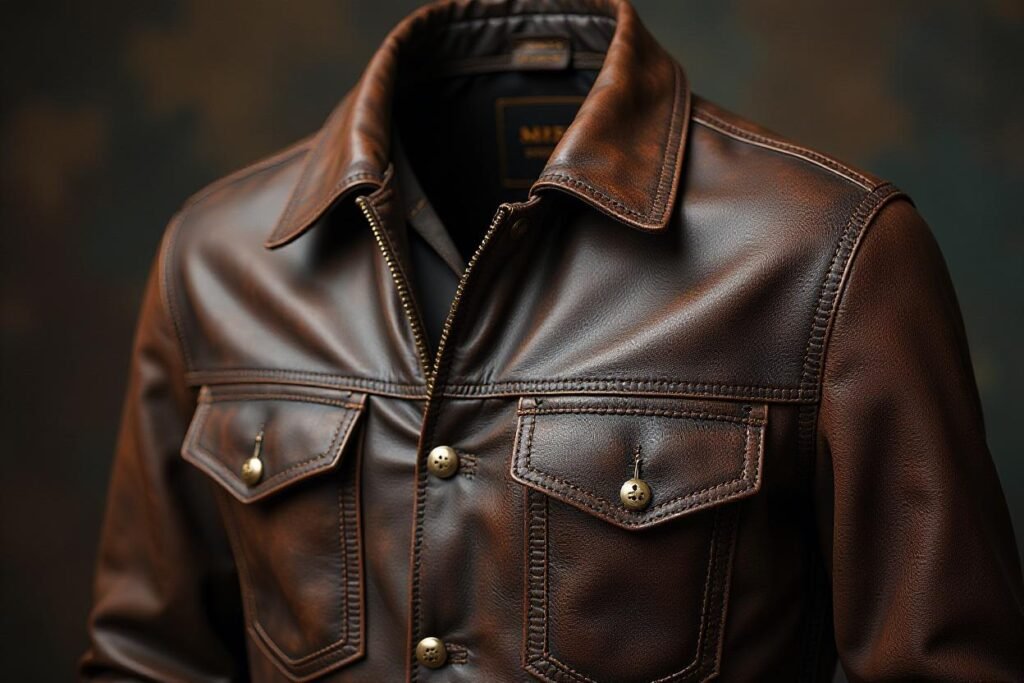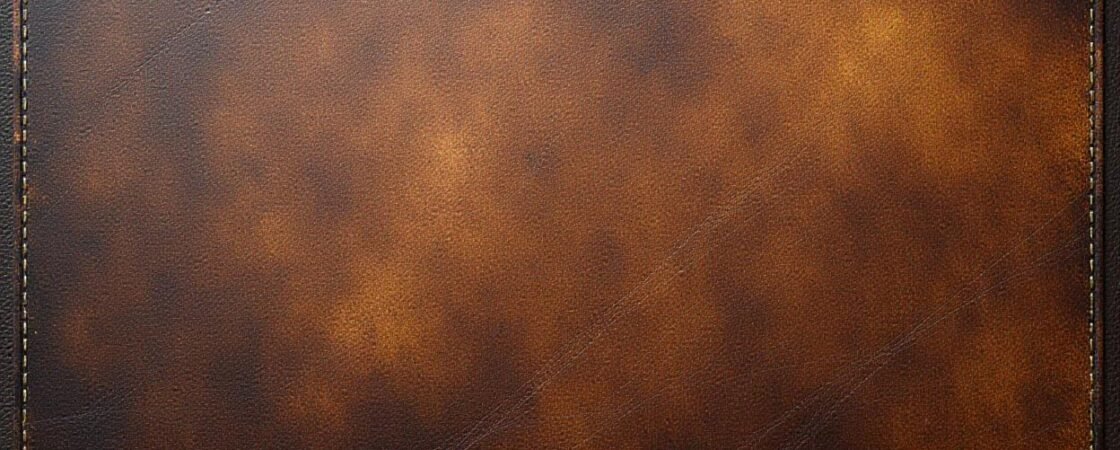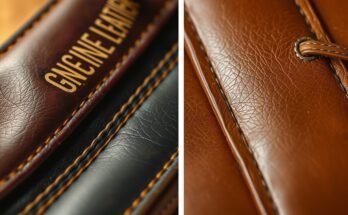Have you ever seen how some leather does get better with age? Patina is that natural aging that makes leather appealing, sophisticated and has character. Full grain leather, on the other hand, ages as it is used, exposed to the sun, and to oils and all sorts of things, whereas cheap leather wears out. Let’s go into what leather patina is, how it develops, and why it’s some leather lover’s wet dream.
What is Leather Patina?
Leather Patina is the shiny layer that forms over high-quality leather with time and, in most places, especially full-grain leather. When the leather is exposed to something, it happens because of a chemical reaction. It is only to the true, higher quality, genuine leather, and never to any lower skin, bonded, or synthetic leather. Leather that’s aged also tends to start absorbing things from its surroundings and start to stay a soft glow to the path so far. More simply, look for things like subtle marks, shine, color changes, and real stories.
Why Patina Can Only Occur on Quality Leather:
So many adore how high quality leather like full grain or vegetable-tanned leather ages with a beautiful patina. However, genuine or bonded leather is lower-grade leather and it has gone through lots of processing with loads of coating. These cannot develop leather patina. They do not age at all, they wear out.
How Leather Patina Forms
The fact that leather absorbs natural and manufactured oil, natural light, and even particles from the skin, clothing or environment that surrounds it, is unique. Over time, exposure to this type of condition creates a sheen and depth in color and makes any leather its own. Some of those things that contribute to leather patina include:
- Natural Oils – Your skin produces oils that absorb into the leather upon touch.
- Dust and Dirt – There is a buildup of tiny particles that give the leather its personality.
- Humidity and Moisture – The higher the humidity, the darker and faster the patina deepens.
- Dyes from Clothing – Whether dyed or not, Leather absorbs basic colors from clothing and deepens their shades.
- Abrasion – The leather is daily used, and gets minor scratches and scuffs from this, which just continue to smooth out and add texture to the surface of the leather.
What effect does Patina have on the Quality of leather?
Although patina doesn’t destroy leather, it actually makes it more persistent and attractive. The patina layer builds, increasing the natural protective coating of the leather making it more resistant to future wear. Patina, too, softens leather over time and creates a more luxurious feel and a rich, well-loved look. The value of leather with patina is that leather gets better with age — like a fine wine — which leads to more valuable pieces and enticing pieces.
Types of Leather That Develops Best Patina
Vegetable-tanned leather is the least processed and therefore lacks the added dyes, which results in the richest leather patina. Usually, this type of leather is used in wallets, belts, and high-end bags which become darker and glow naturally as time passes. Also full-grain leather develops a lovely patina. Most of these leathers are expensive, but well worth the price they command because they age well and hold up longer.
Speeding up the Process of Leather Patina
If you love the look of the leather patina and want it to develop faster, here’s what you can do:
- Use Your Leather Often – The more you handle it, the more it is infused with natural oils and use.
- Sunlight Exposure – Moderate sunlight will deepen the color and may help the patina develop.
- Skip the Protective Coatings – Avoid heavy waterproofing products as they can make patina wait.
- Skip Dye or Pigment Treatments – Sticking with natural, untreated leather absorbs oils and sunlight better.
As your leather item ages naturally it will develop that beautiful patina, gaining its own story.
Slowing Down the Leather Patina Process
Some people like leaving the leather in its original state and these tend to be for those hoping to achieve a polished, ‘like new’ appearance. To slow the patina process:
- Regular Cleaning – A damp cloth should be used to clean dirt and oils away from your leather.
- Conditioning – Leather conditioner applied on your leather will help keep your leather supple, making it less likely to absorb oils and dirt.
- Store Carefully – Make sure you store your leather in a cooler, dryer place, and out of direct sunlight.
However, these steps won’t completely prevent patina on leather but if you follow along it will slow it down and keep your leather looking newer for a longer period.
Is Patina a Good Thing?

Absolutely! Patina is a sign of quality and authenticity, showing that the leather is full-grain and natural. It’s also a source of pride to leather lovers, who appreciate that each mark, scratch, and spot of shine tells the story of a well-used item. Leather with patina is very much valued because it marks features of uniqueness and beauty. Many people specifically select full-grain or vegetable-tanned leather for this reason alone: the beauty of patina is practically unbeatable.
FAQ: Common Questions Answered
How Long Does It Take for Leather to Patina?
You won’t know precisely when it happens, though it can occur anywhere from a few weeks (for frequently used items) to several years (for the rest). Thus, for example, daily handled items such as wallets and phone cases begin to show patina sooner than less used items like belts or jackets. But it’s a slow process, and the wait is so worth it.
What Does Patina on Leather Look Like?
Leather has a slight patina, which gives it a semi-glossy feel and sometimes something like a marble. Depending on the type of leather, and how the leather was used or exposed, the leather will darken in some areas to give a rich antique looking, or a rich antique-like appearance.
Can You Remove Leather Patina?
To be sure, you can clean or condition out the patina on leather, but you nearly can’t remove it without the leather getting damaged. In the most part, leather patina can be a desirable quality to have and shouldn’t be removed as it helps make fine, quality leather unique and appealing.
Why Does Leather Turn Green?
Leather dyed black can turn green if it is dyed poorly, or exposed to moisture and oxidation. This is visible in poor dyed leather or not kept well. If oils and dyes break down in certain conditions it can leave a green tinge.
Conclusion
The mark of a quality leather is patina. It’s a reminder of the material’s natural beauty, and a testament to its longevity. Rather than wearing down, the leather patina will actually help leather items gain character, developing a uniqueness that none other will have. So, the next time you notice your leather aging, remember: it’s not wearing out, it’s maturing gracefully. This patina is a feature, not a flaw; it’s a sign that your leather has quality. Embrace it.




